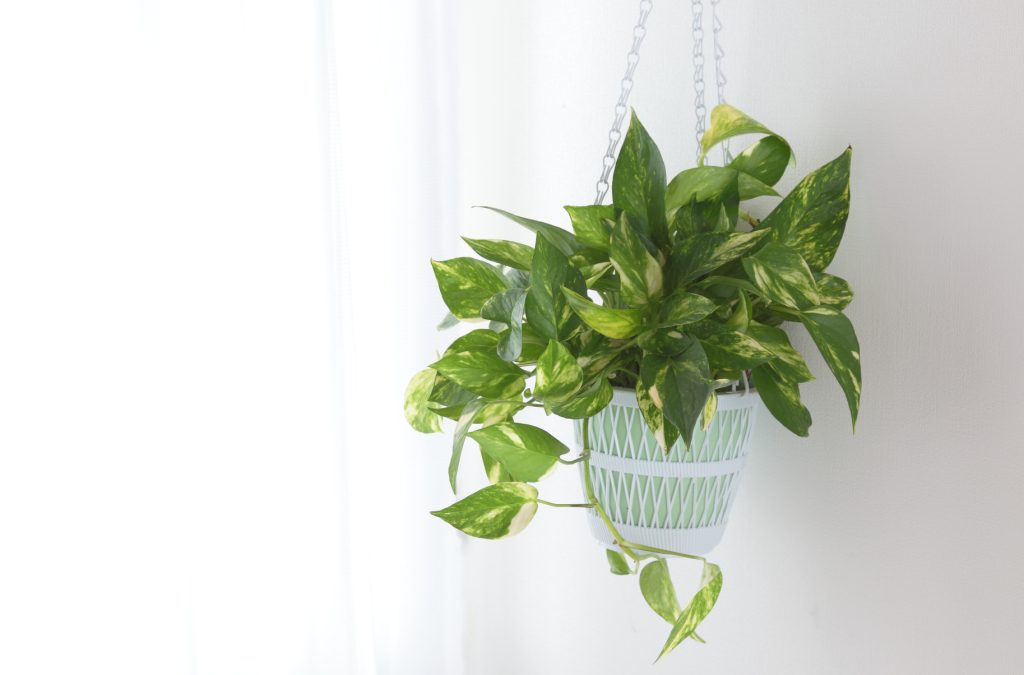Native to Southeast Asia, Indonesia, and the Solomon Islands, the Pothos is one of the most common houseplants. Easily identifiable by their trailing vines and heart shaped leaves, these plants are known for their hardiness and resilience. Also known as “devil’s ivy” pothos are quick growers in the right conditions. In their natural habitat, they are climbing vines- utilizing aerial roots to scale trees and reach the top of the canopy. Despite their popularity, Pothos are toxic to humans and pets.
Pothos can tolerate low/ fluorescent lights, but they will thrive in bright, indirect light. If your pothos is of a variegated variety, the color differences will be more pronounced in brighter light conditions.
Water with filtered or rain water when soil is 50%- 85% dry.
Ideal humidity for Pothos range from 40%-70%, but they can easily tolerate lower humidity environments. They will thrive in temperatures between 60-85 degrees.
Pothos are easy to propagate via stem cutting. Simply cut below a node and place in water! If you don’t want to propagate with water, putting the cutting straight into dirt to root works, too.
There are a few reasons why your pothos could be turning yellow- the most common being improper watering. Adjust your watering schedule to watering when soil is 50%- 85% dry. This could also be due to low lighting conditions- consider moving your pothos to a place where it gets more light! Leaves can also turn yellow because of a nutrient deficiency or old age.
Similar to why it might turn yellow, drooping can happen if pothos are overwatered or underwatered. If your pothos is overwatered, the leaves will be limp to the touch, droop, and/or turn yellow. These are signs of root rot. If your pothos is thirsty, the leaves will curl in on themselves and droop. Give it a nice thorough drink if this is the case.
